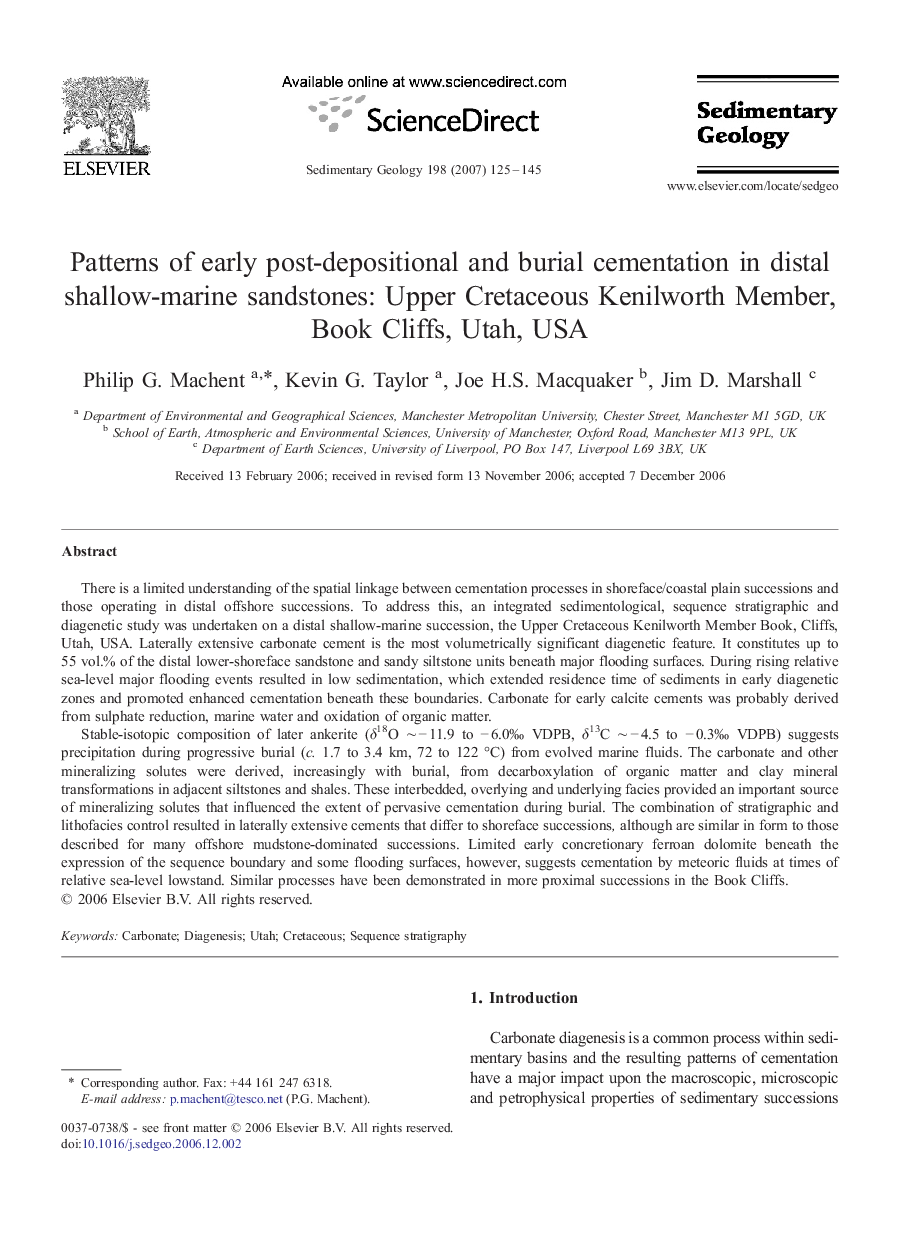| Article ID | Journal | Published Year | Pages | File Type |
|---|---|---|---|---|
| 4690841 | Sedimentary Geology | 2007 | 21 Pages |
Abstract
Stable-isotopic composition of later ankerite (δ18O â¼Â â 11.9 to â 6.0â° VDPB, δ13C â¼Â â 4.5 to â 0.3â° VDPB) suggests precipitation during progressive burial (c. 1.7 to 3.4 km, 72 to 122 °C) from evolved marine fluids. The carbonate and other mineralizing solutes were derived, increasingly with burial, from decarboxylation of organic matter and clay mineral transformations in adjacent siltstones and shales. These interbedded, overlying and underlying facies provided an important source of mineralizing solutes that influenced the extent of pervasive cementation during burial. The combination of stratigraphic and lithofacies control resulted in laterally extensive cements that differ to shoreface successions, although are similar in form to those described for many offshore mudstone-dominated successions. Limited early concretionary ferroan dolomite beneath the expression of the sequence boundary and some flooding surfaces, however, suggests cementation by meteoric fluids at times of relative sea-level lowstand. Similar processes have been demonstrated in more proximal successions in the Book Cliffs.
Related Topics
Physical Sciences and Engineering
Earth and Planetary Sciences
Earth-Surface Processes
Authors
Philip G. Machent, Kevin G. Taylor, Joe H.S. Macquaker, Jim D. Marshall,
